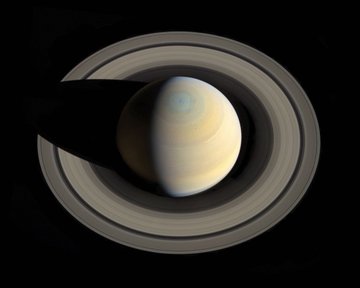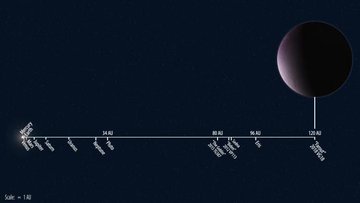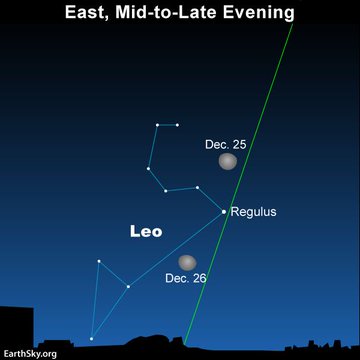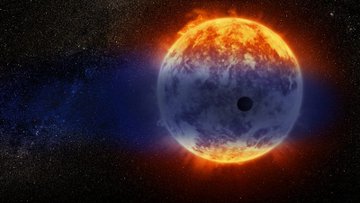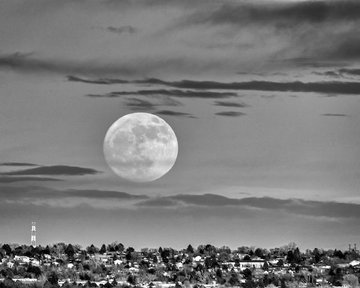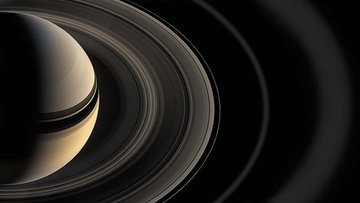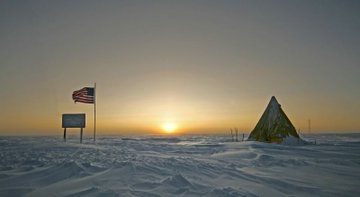-
Scientists have long said that Saturn's glorious rings may be only temporary. New research confirms a "ring rain" onto Saturn that'll leave the planet ringless in 100 to 300 million years.
 Watch a video: http://bit.ly/2CqbXJM
Watch a video: http://bit.ly/2CqbXJM 
Image via NASA/Cassini.
-
Popular at EarthSky ... Parker Solar Probe has now swept within the sun's corona.

 No other spacecraft has ever come this close to the sun's surface! And, it's going to get closer. Read more: http://bit.ly/2CmRLIM
No other spacecraft has ever come this close to the sun's surface! And, it's going to get closer. Read more: http://bit.ly/2CmRLIM 
-
The December solstice kicked off Earth's shortest season
 from the December solstice to the March equinox. The current season is about 89 days. Longest season - June solstice to September equinox - is about 94 days. Read more: http://bit.ly/2EsC8B3
from the December solstice to the March equinox. The current season is about 89 days. Longest season - June solstice to September equinox - is about 94 days. Read more: http://bit.ly/2EsC8B3 
-
Popular at EarthSky ... new solar system object more than 100 times Earth's distance from our sun. It takes 1,000 earthly years to orbit the sun once.
 Astronomers have nicknamed it Farout! Read more: http://bit.ly/2Ci06xt
Astronomers have nicknamed it Farout! Read more: http://bit.ly/2Ci06xt 
-
Last Friday, NASA's Juno spacecraft made its 16th science pass over Jupiter's cloud tops, marking the halfway point in its prime mission.
 Check out this bonanza of amazing images: http://bit.ly/2EqtBi8
Check out this bonanza of amazing images: http://bit.ly/2EqtBi8 
-
This weekend's full moon over the Chinese Lantern Festival in Durham, North Carolina, via our friend Chirag Upreti. Thanks, Chirag!
Read more about the festival here: http://bit.ly/2QQ5Y9O -
50th anniversary of 1st Earthrise photo from moon.
 Tomorrow marks 50 years since Apollo 8 astronauts captured one of the best-known photos of the 20th century – Earthrise from the moon. Watch a video: http://bit.ly/2T9enSL
Tomorrow marks 50 years since Apollo 8 astronauts captured one of the best-known photos of the 20th century – Earthrise from the moon. Watch a video: http://bit.ly/2T9enSL 
Image via NASA.
-
On the nights of December 25 and 26, look for the moon and Regulus, the Royal Star, coming up above your eastern horizon.
 If you miss it, you can get up before daybreak to view the waning gibbous moon and Regulus much higher up in the sky. Read more: http://bit.ly/2rTtkg5
If you miss it, you can get up before daybreak to view the waning gibbous moon and Regulus much higher up in the sky. Read more: http://bit.ly/2rTtkg5 
-
The moon is in front of the constellation Gemini tonight, near its brightest stars Castor and Pollux.
 On December 24, you'll find the moon farther from these stars but still near enough to help you find them. Read more: http://bit.ly/2T4oCaP
On December 24, you'll find the moon farther from these stars but still near enough to help you find them. Read more: http://bit.ly/2T4oCaP 
-
It's the case of the vanishing exoplanet. Astronomers have found an exoplanet - 2nd of its kind now - that's gradually "evaporating."
 It may have lost 35% of its original mass, so far. Read more: http://bit.ly/2rQN6Jd
It may have lost 35% of its original mass, so far. Read more: http://bit.ly/2rQN6Jd 
Image via NASA/ESA/D. Player (STScI).
-
New Horizons is approaching Ultima Thule!
 The spacecraft has been given a "go" to take the optimal path past Ultima Thule, which is a billion miles beyond Pluto. The encounter will be on January 1, 2019. Read more: http://bit.ly/2CvzVn2
The spacecraft has been given a "go" to take the optimal path past Ultima Thule, which is a billion miles beyond Pluto. The encounter will be on January 1, 2019. Read more: http://bit.ly/2CvzVn2 
image via Johns Hopkins.
-
Matthew Chin in Hong Kong caught Mercury and Jupiter this morning - December 22 - from Hong Kong. Thanks, Matthew!
See more photos of the beautiful conjunction of these 2 planets this week: http://bit.ly/2SVBq39
Matthew's Facebook page: http://bit.ly/2CsFEtE -
Last night's moon, from Larry Marr in Colorado Springs, Colorado.
Tonight's moon falls within a day of the December solstice. That hasn't happened since 2010. The next time will be 2029. Read more: http://bit.ly/2LrTZcQ -
Last night's beautiful solstice moon.
Read more: https://earthsky.org/tonight/full-long-night-moon-on-december-22 … -
Good morning! Here's a nice gif of Saturn's rings ... which were named alphabetically in the order they were discovered.
Read about a "ring rain" that may leave Saturn ringless: https://earthsky.org/space/saturns-rings-disappearing-ring-rain-video … -
Tuesday's waxing moon. Beautiful multiple camera exposures of the waxing moon, at sunset, from this past Tuesday evening.
 Read more: http://bit.ly/2EHdmhx
Read more: http://bit.ly/2EHdmhx 
Image via Steven A. Sweet/Lunar 101 Moon Book. Thank you, Steven!
Thank you, Steven!
Lunar 101 Moon Book: http://bit.ly/2EBWLKY
-
Where noon comes just once a year.
 At Earth’s South Pole, high noon happens only once every year, on the December solstice (Dec 21). Meanwhile, the North Pole has its only midnight.
At Earth’s South Pole, high noon happens only once every year, on the December solstice (Dec 21). Meanwhile, the North Pole has its only midnight.  Read more: http://bit.ly/2EHtcsC
Read more: http://bit.ly/2EHtcsC 
Image via NASA Earth Observatory.
-
The December full moon falls within a day of the solstice.
 Although the Northern Hemisphere has its longest winter night tonight, the lamp of a nearly full moon will light up the nighttime from dusk until dawn.
Although the Northern Hemisphere has its longest winter night tonight, the lamp of a nearly full moon will light up the nighttime from dusk until dawn.  Read more: http://bit.ly/2LrTZcQ
Read more: http://bit.ly/2LrTZcQ 
-
A sense of balance, at the solstice point. At the December solstice - the 21st - Earth arrives at the 4th of the year’s 4 cardinal points.
 Astronomer Guy Ottewell tells us more about the shortest day of the year: http://bit.ly/2EEYdMC
Astronomer Guy Ottewell tells us more about the shortest day of the year: http://bit.ly/2EEYdMC
Image via Guy Ottewell.
-
Solstice sun at southernmost point. The exact time of the solstice - when the sun is southernmost in our sky for the year - is 22:23 UTC today.
 Translate UTC to your time: http://bit.ly/2T0TUPN
Translate UTC to your time: http://bit.ly/2T0TUPN  Read more: http://bit.ly/2T40yoG
Read more: http://bit.ly/2T40yoG 
Image via Peter Lowenstein.
There are no more Tweets in this timeline.

